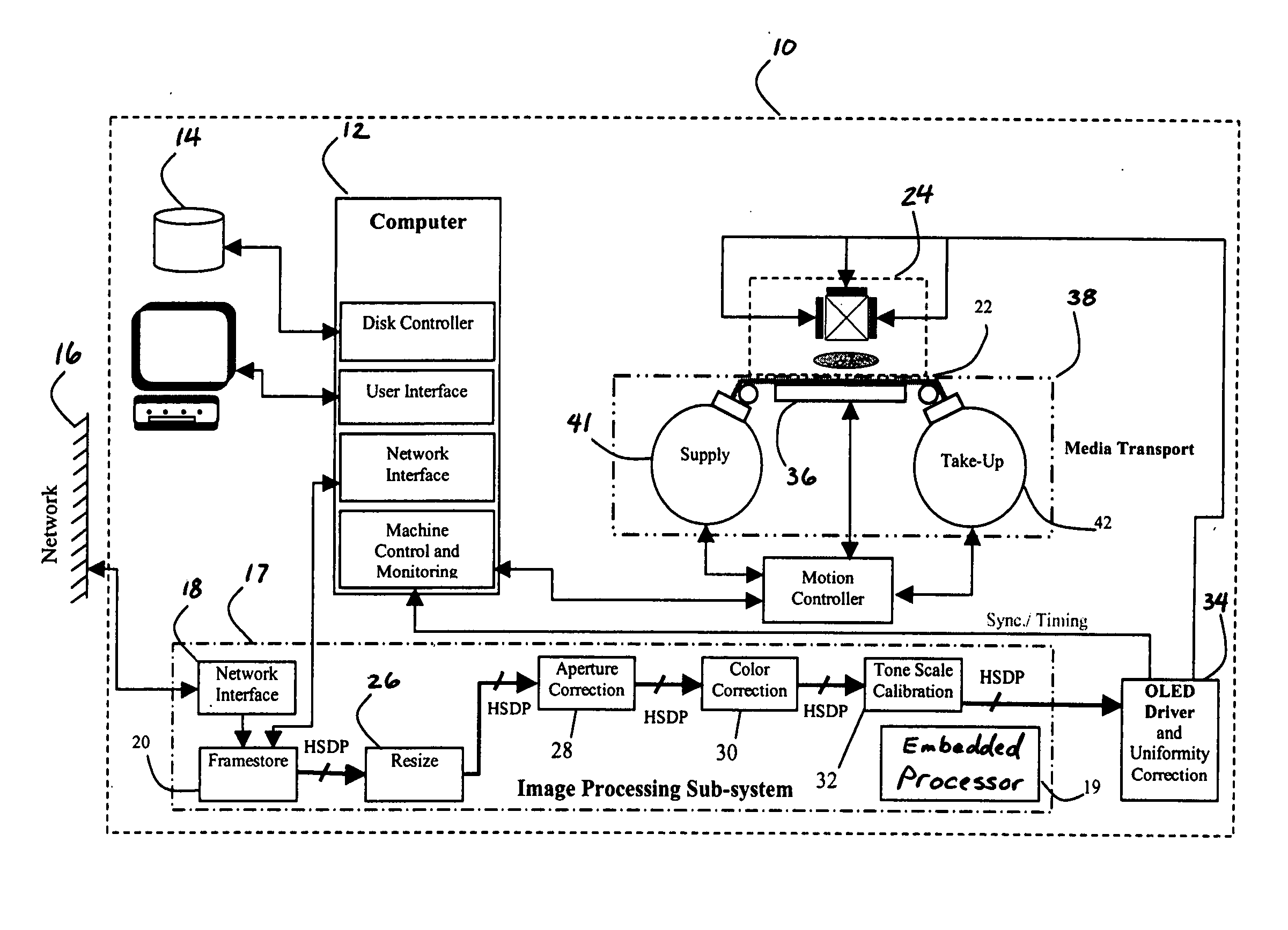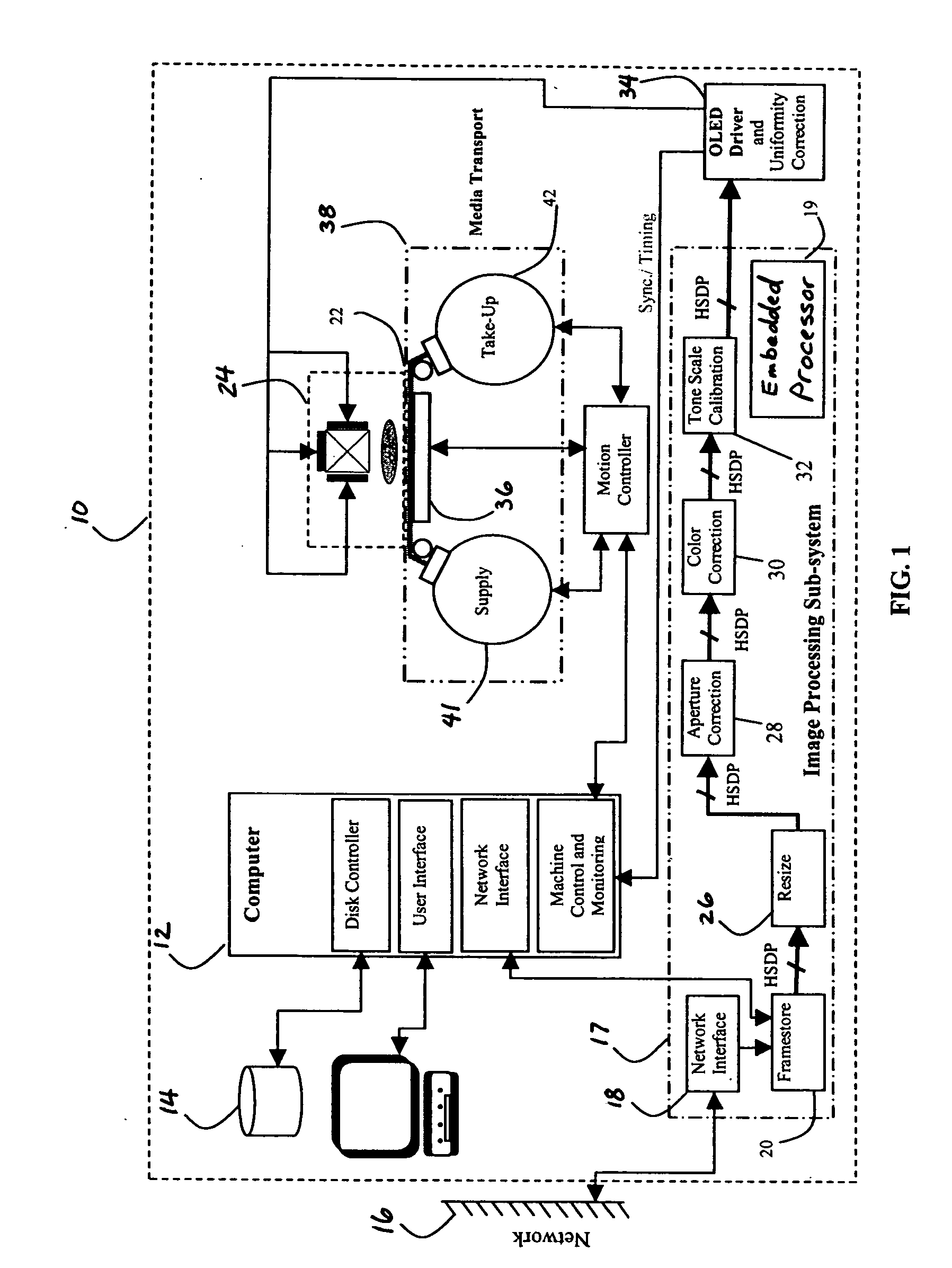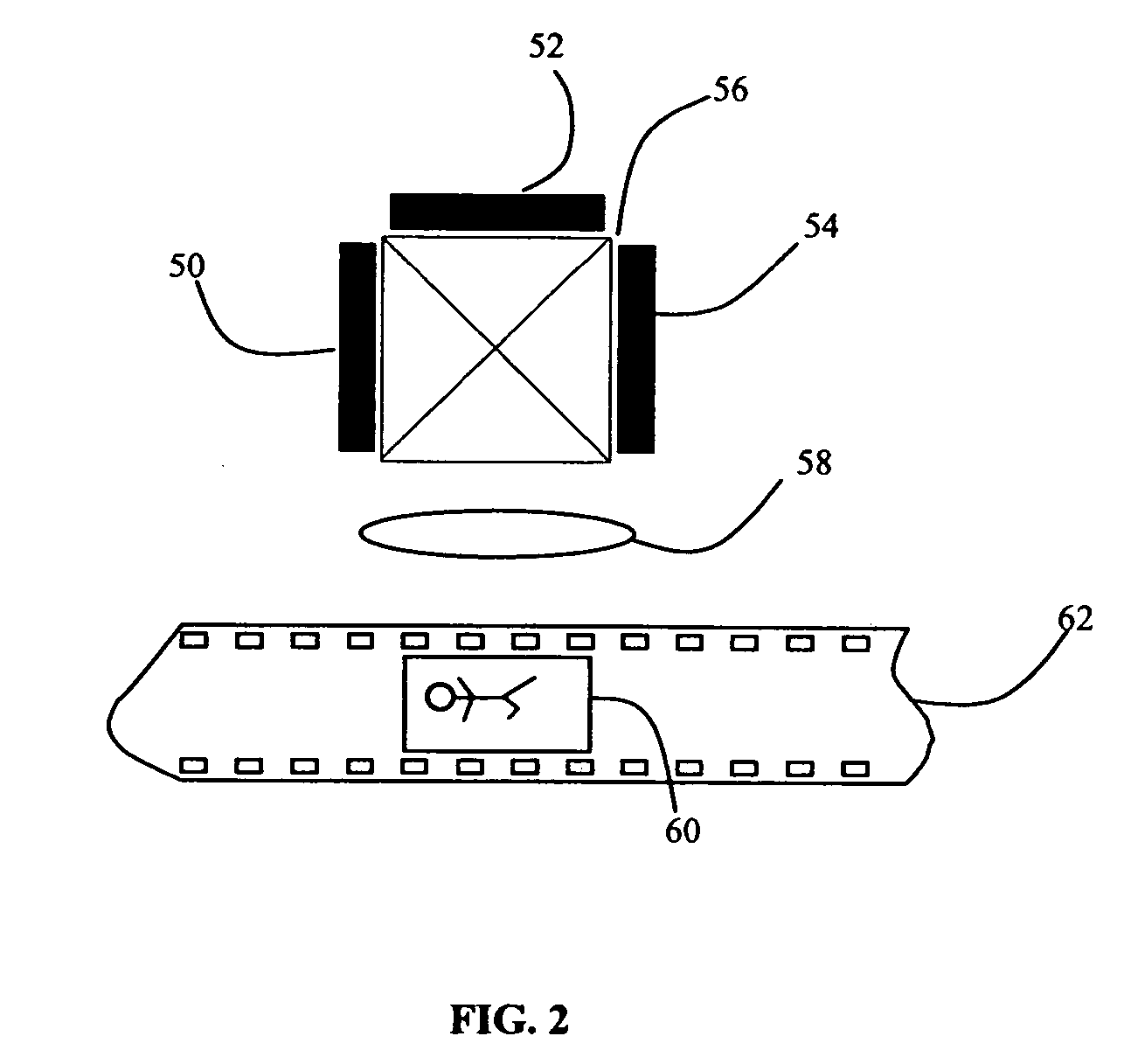Printing image frames corresponding to motion pictures
a technology of image frames and motion pictures, applied in the field of printing image frames, can solve the problems of inability to create images, limitations in the speed of scanners, inherent limitations of the maturity used to print images onto motion picture photosensitive mediums, etc., and achieve the effect of improving performan
- Summary
- Abstract
- Description
- Claims
- Application Information
AI Technical Summary
Problems solved by technology
Method used
Image
Examples
Embodiment Construction
[0032] The present invention is particularly suited for printing frames of either monochromatic (e.g., black and white) or full color motion pictures images. Digital image files for such motion pictures images can either be generated by a digital camera, scanned from images recorded on a photographic medium, or can be computer generated digital images.
[0033] Organic Light Emitting Diode (OLED) arrays can be made as a two dimensional monochromatic array of pixels or as a multi-color (e.g., red, green, blue tri-color) side by side pixel array, or even as a tri-color stacked pixel array. The array sizes, pixel pitch and aspect ratios can be made in a variety of resolution and densities. Each pixel site in a tri-color side by side or stacked array is composed of three light emitting diodes of different colors. Each light emitting diode in a tri-pixel site and therefore the entire array can be individual controlled to produce an effect similar to that of a color cathode ray tube in a te...
PUM
 Login to View More
Login to View More Abstract
Description
Claims
Application Information
 Login to View More
Login to View More - R&D
- Intellectual Property
- Life Sciences
- Materials
- Tech Scout
- Unparalleled Data Quality
- Higher Quality Content
- 60% Fewer Hallucinations
Browse by: Latest US Patents, China's latest patents, Technical Efficacy Thesaurus, Application Domain, Technology Topic, Popular Technical Reports.
© 2025 PatSnap. All rights reserved.Legal|Privacy policy|Modern Slavery Act Transparency Statement|Sitemap|About US| Contact US: help@patsnap.com



